Exploring the Ancient Meaning and Symbolism of Ailm: Strength and Endurance in Celtic Culture
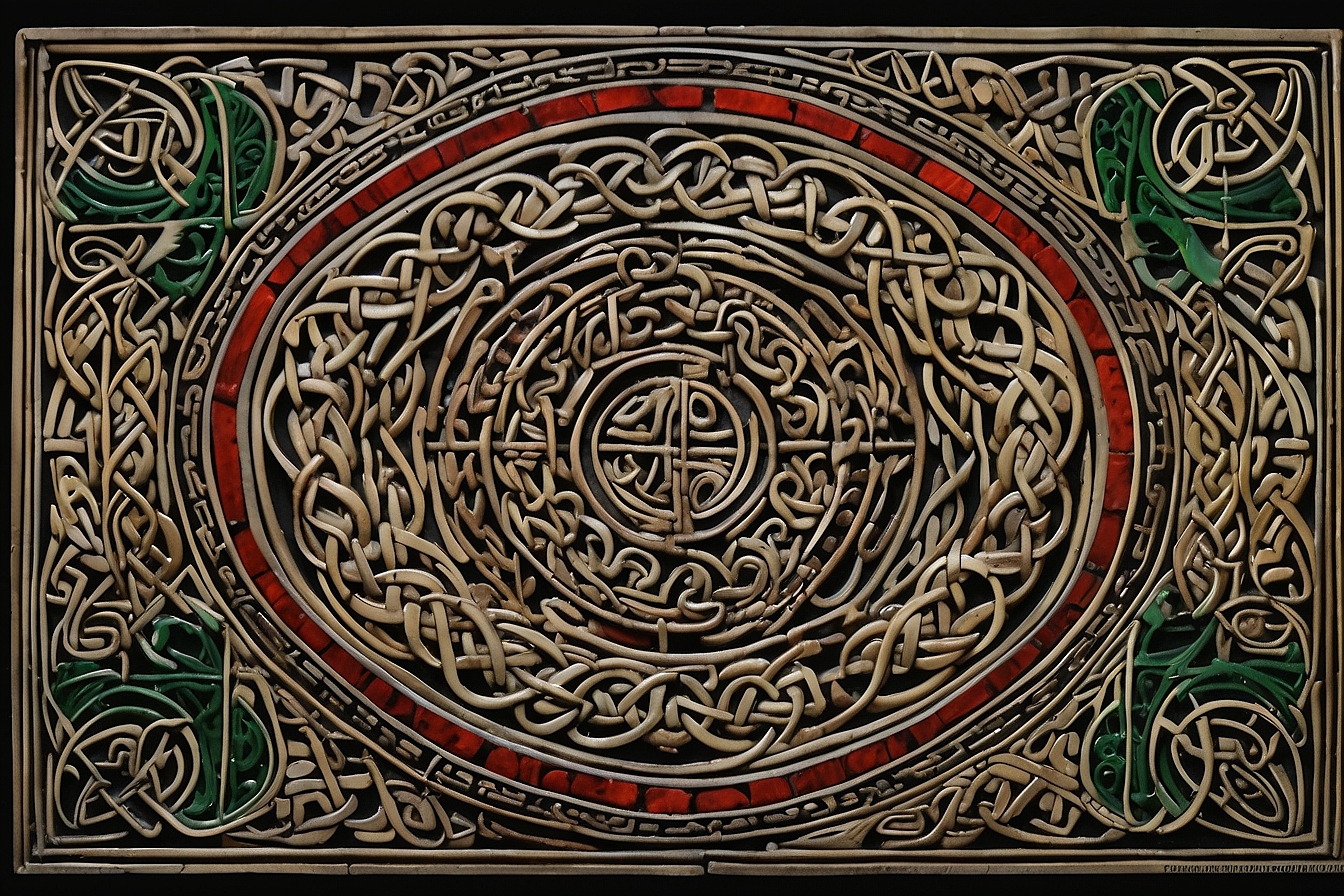
Updated On: April 16, 2024 by Fatma Mohamed
Delve into the rich tapestry of Celtic culture as we embark on a journey through the enigmatic Symbolism of Ailm. Within the intricate knotwork of Celtic lore lies a profound reverence for nature’s elements, and the Ailm symbol emerges as a testament to the enduring strength embedded in the ancient Celtic ethos. Etched into the annals of history, Ailm embodies not just a mere emblem but a profound embodiment of resilience and fortitude.
In the labyrinthine passages of Celtic mythology, Ailm, symbolized by the evergreen coniferous tree, stands as a steadfast sentinel, whispering tales of endurance through the ages. Rooted in the fertile soil of Celtic belief systems, its branches reach skyward, mirroring the indomitable spirit of a culture deeply intertwined with the rhythms of the natural world. Each twist and turn of its symbolic form tells a story of survival against the odds, a testament to the unwavering resolve ingrained in Celtic heritage.
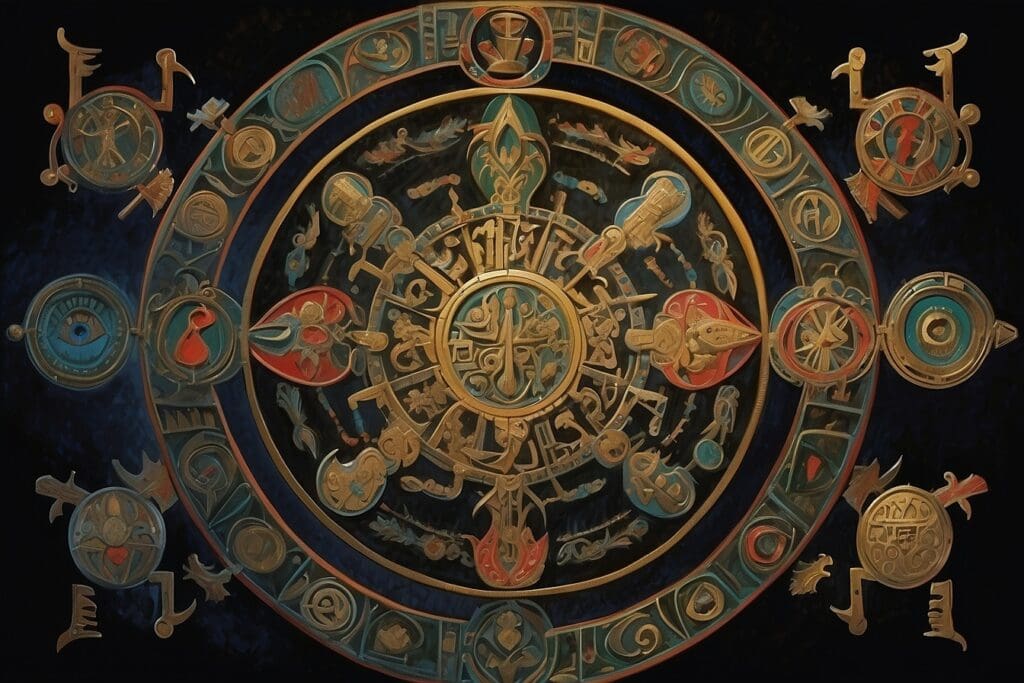
As we unravel the layers of meaning interwoven with the Symbolism of Ailm, we unveil a tapestry of resilience and strength that transcends the bounds of time. Join us as we traverse the verdant landscapes of Celtic folklore, where the echoes of ancient wisdom resonate through the ages, reminding us of the enduring power found within the heart of Ailm.
Table of Contents
The History and Symbolism of Ailm in Celtic Culture
The Ailm symbol, a seemingly simple design, holds deep significance within Celtic culture. Its roots can be traced back to the Ogham alphabet, an ancient tree-based writing system, and its form embodies the enduring spirit of the Celtic people.
Connected to the Ogham Alphabet
The Ogham alphabet, used by Celts from roughly the 4th century BCE to the 5th century CE, consisted of a series of lines and notches etched onto the edges of staves, often representing different trees. Ailm is believed to be derived from the letter “A,” which is associated with the fir or Scots pine. These evergreen trees held a special place in Celtic reverence for nature. Their ability to thrive in harsh conditions, withstanding strong winds and cold winters, symbolized resilience and perseverance – qualities highly valued by the Celts.
Symbol of Strength and Endurance
The connection between Ailm and the evergreen trees translates directly into its symbolic meaning. Just as the pine and fir weather harsh elements, the Ailm symbol represents inner strength and the ability to overcome adversity. It serves as a reminder to face challenges with fortitude and determination. Additionally, the evergreen nature of these trees hints at themes of renewal and rebirth, suggesting that even after hardship, there is always the potential for growth and new beginnings. The Ailm symbol remains a powerful emblem for those seeking inspiration to persevere through difficult times.
Associated with the Pine Tree and Eternal Life
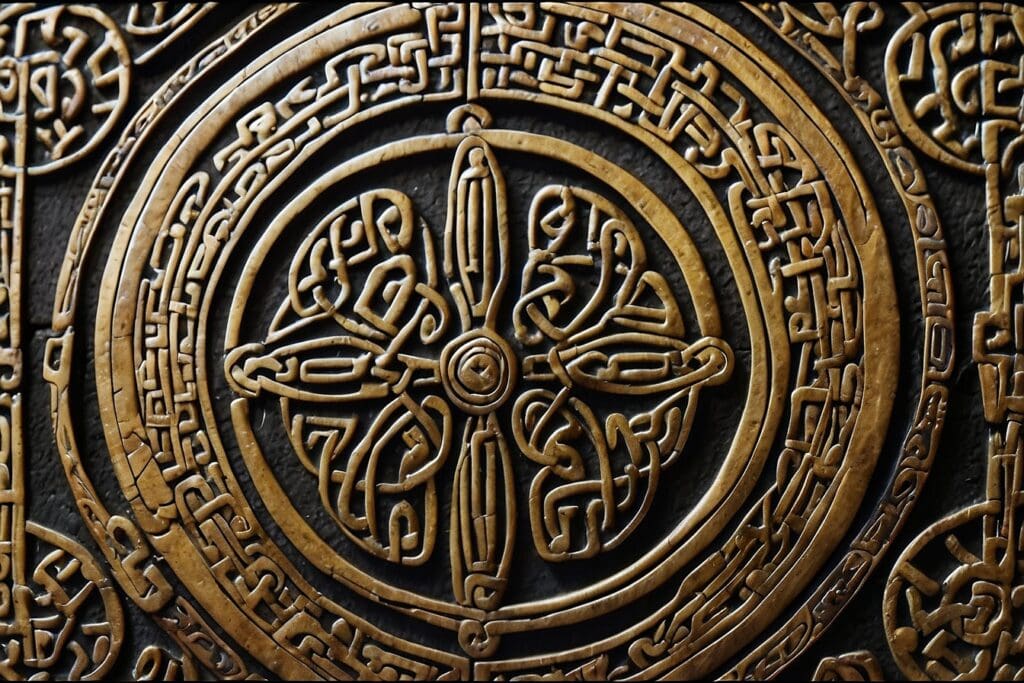
The Ailm symbol’s link to the pine tree extends beyond resilience. The evergreen quality of pines not only suggested perseverance but also the potential for everlasting life. Unlike deciduous trees that lose their leaves in winter, pines retain their green needles throughout the year. This characteristic led the Celts to associate the pine with immortality and the never-ending cycle of life, death, and rebirth. By incorporating the Ailm symbol into jewellery or artwork, Celts might have been seeking a connection to the afterlife or a reminder of the enduring human spirit.
Ailm in the Context of Celtic Belief Systems
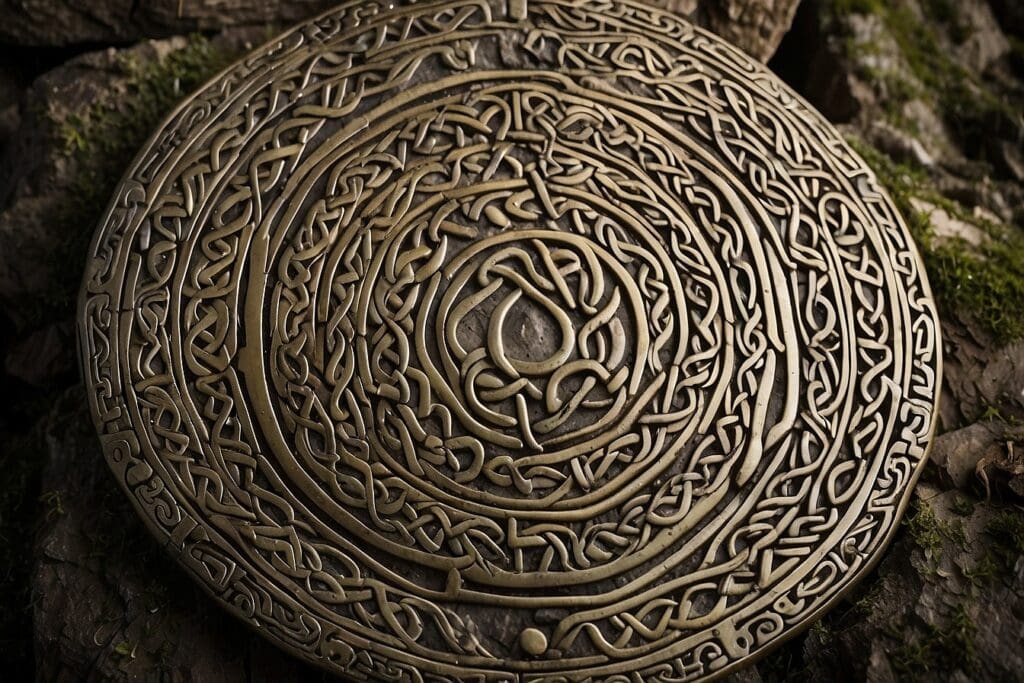
Before we delve into the intricate the using of Ailm today, it’s essential to grasp its profound significance within the broader framework of Celtic belief systems.
Nature as Sacred: Ailm’s Connection to the Natural World
In the intricate tapestry of Celtic belief systems, nature holds a revered position as a sacred realm intertwined with the spiritual and mundane aspects of life. Ailm, symbolized by the evergreen coniferous tree, embodies this deep connection to the natural world. It serves as a reminder of the Celtic reverence for the land, the forests, and the cycles of growth and decay that sustain life. Ailm’s presence in Celtic culture reflects an understanding of humanity’s intimate relationship with the environment, emphasizing harmony and respect for the earth’s bountiful offerings.
Ailm and the Cosmic Order: Reflecting Celtic Cosmology
Within the expansive cosmos of Celtic cosmology, Ailm finds its place as a symbolic link between the earthly realm and the celestial spheres. Its branches reaching towards the heavens evoke notions of transcendence and interconnectedness with the divine. In the ancient Celtic worldview, the natural world was not separate from the cosmic order but rather intricately woven into its fabric. Ailm, with its enduring presence and symbolic significance, serves as a tangible expression of this interconnectedness, bridging the gap between the earthly and the divine.
Ailm as a Cultural Touchstone: Values and Worldview of the Ancient Celts
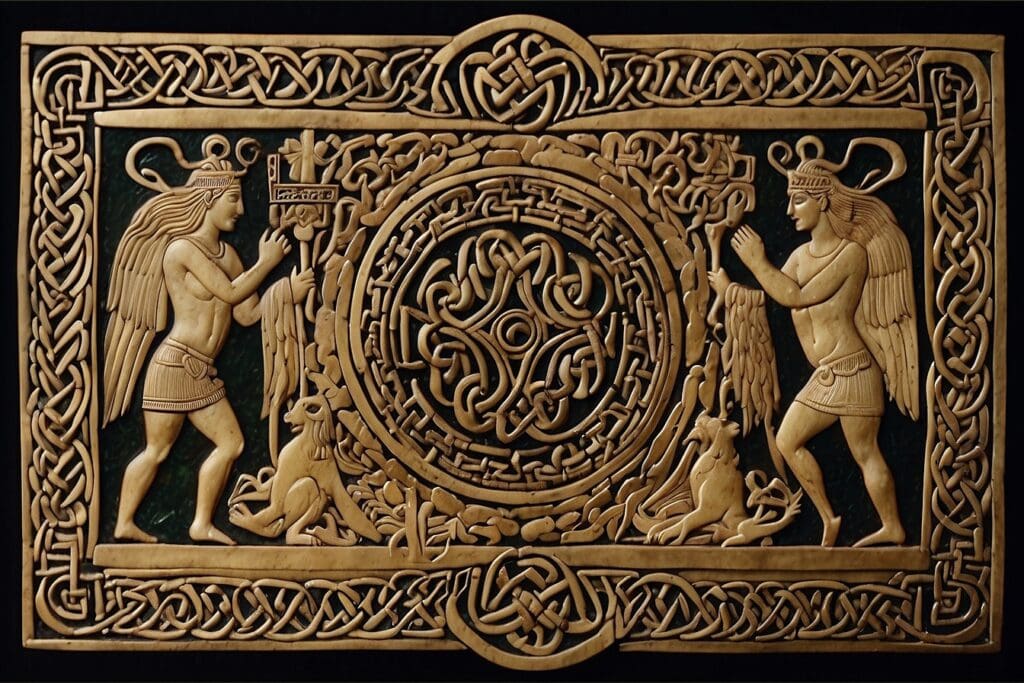
Beyond its botanical representation and cosmic symbolism, Ailm serves as a cultural touchstone embodying the core values and worldview of the ancient Celts. It encapsulates their resilience, strength, and commitment to preserving their cultural identity amidst the ebb and flow of history. Ailm reminds us of the importance of honouring tradition, embracing change, and remaining rooted in ancestral heritage. Through the lens of Ailm, we gain insight into the values that shaped Celtic society, offering lessons in resilience, endurance, and reverence for the natural world that resonate across generations.
How Ailm is Represented and Used Today
In contemporary contexts, Ailm continues to hold significance as a symbol of resilience and endurance, resonating with individuals who seek connections to Celtic heritage or draw inspiration from its timeless wisdom. From tattoos to jewellery, Ailm’s iconic imagery is embraced as a powerful emblem of strength and continuity, serving as a reminder of the enduring spirit that transcends time and culture. Additionally, within modern Celtic revival movements, Ailm serves as a rallying point for those seeking to reclaim and celebrate their ancestral roots, fostering a sense of cultural pride and identity in an increasingly globalised world.
In Celtic Designs and Patterns
The Ailm symbol remains a popular motif in modern Celtic design. Jewelists incorporate it into pendants, rings, and other pieces, offering wearers a connection to their Celtic heritage. Graphic designers weave it into intricate patterns for logos, invitations, or even tattoos. The Ailm’s versatility allows it to seamlessly integrate into a variety of artistic expressions, adding a touch of timeless symbolism.
As a Symbol of Resilience and Healing
Beyond its aesthetic appeal, the Ailm symbol continues to resonate as a powerful emblem of resilience and healing. Individuals facing challenges or recovering from illness or hardship may find solace in Ailm’s message of perseverance. It serves as a visual reminder of the inner strength we possess to overcome adversity and emerge stronger. Support groups or recovery centres might incorporate the Ailm symbol as a source of inspiration for their members.
In the Field of Healthcare and Wellness
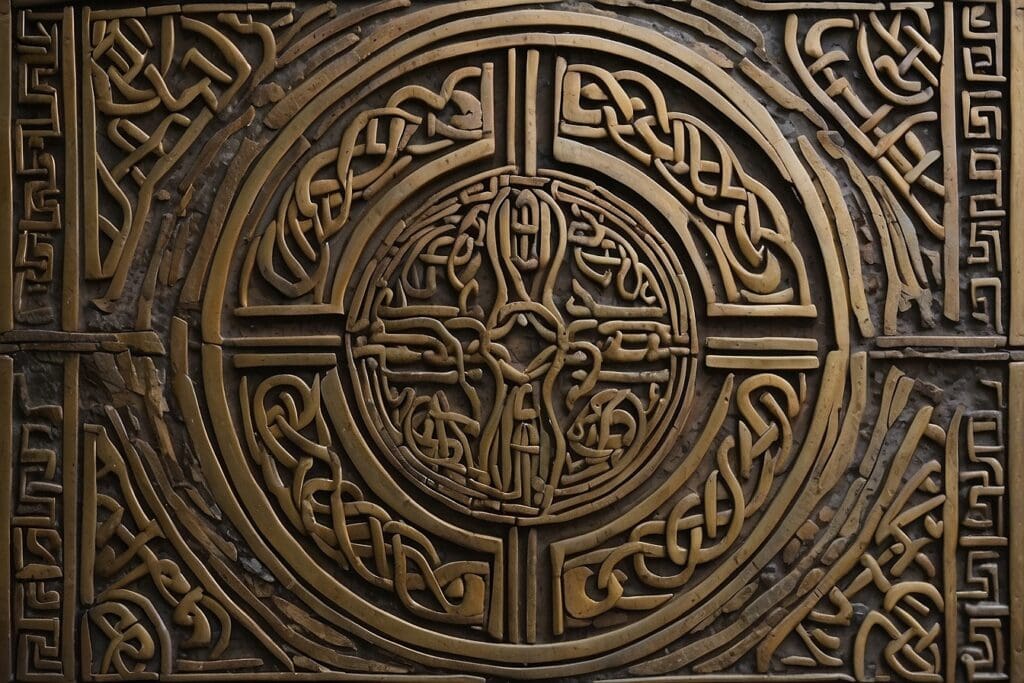
The association of the Ailm symbol with the evergreen pine and the cycle of life has led to its use in the field of healthcare and wellness. Some therapists or counsellors may utilize the Ailm symbol to represent the potential for renewal and growth, encouraging patients on their journeys towards healing. Integrative healthcare practitioners might incorporate the symbol into their practices as a reminder of the body’s inherent ability to heal and regenerate. The Ailm symbol, therefore, transcends its historical roots, offering a message of hope and strength that resonates in contemporary contexts.
Conclusion
In conclusion, the Ailm symbol stands as a testament to the enduring spirit of the Celts. Its journey from the ancient Ogham alphabet to its contemporary applications reflects the timeless human desire for strength, perseverance, and connection to nature. As we navigate the complexities of modern life, the Ailm symbol serves as a powerful reminder: within each of us lies the resilience to overcome challenges and the potential for continual growth.
Whether seeking inspiration through artistic expression, drawing solace during difficult times, or embracing the body’s capacity for healing, the Ailm symbol empowers us to connect with the enduring strength that lies at the heart of the human experience. So, the next time you encounter this simple yet evocative design, remember the legacy it carries – a legacy that whispers of resilience, renewal, and the unwavering spirit of the Celts.
FAQs
1. What is the ancient meaning and symbolism of Ailm in Celtic culture?
Ailm stands for strength and endurance in Celtic culture, which is rich with Gaelic heritage.
2. Can you tell me more about the design of Ailm?
The crosslike design of Ailm has deep roots within Irish culture and holds significant phonetic value.
3. How does the symbolism of Ailm show in history?
The symbolism of Ailm shows its cultural significance through tales passed down over centuries, highlighting its symbolic meanings tied to Celtic spirituality.
4. Why do people explore the ancient meaning and symbolism of Ailm nowadays?
People today explore it as a way to understand past Irish and Gaelic practices, making sense of their own spiritual beliefs or researching their family roots in these cultures.






